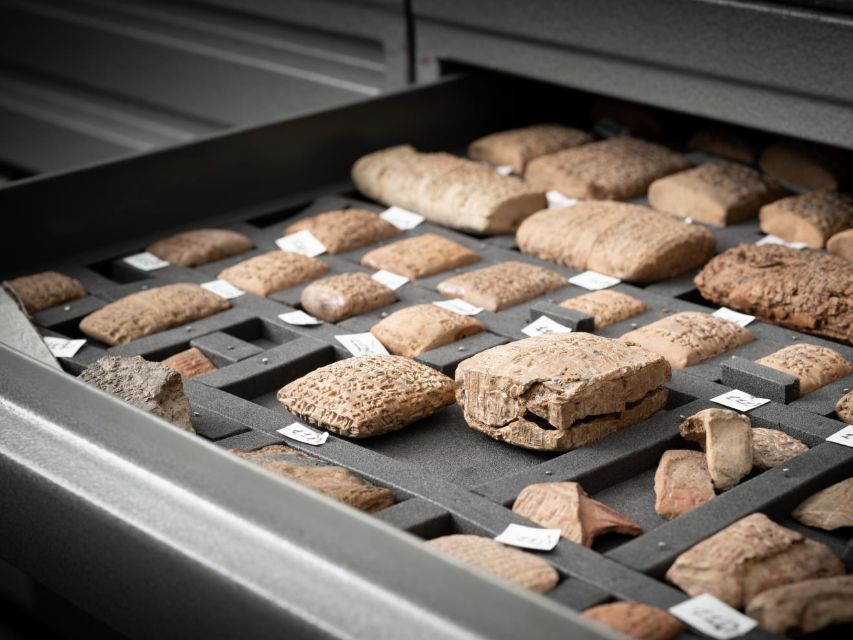sealed...
When this tablet was dug up, it was wrapped in a clay envelope that was broken afterwards. For your orientation: in the box here, the letter is on the bottom right, with the top and bottom halves of the envelope on each side. In the picture made in the vault, the two halves of the envelope are stacked on top of each other, with the letter on the left.
In ancient Mesopotamia, envelopes served as a type of data security. In the case of these letters, it allowed the protection of the contents of the correspondence, and it served as a way for the receiver to know the letter wasn’t opened or even tempered with. And it wasn’t just letters. Legal documents, such as last wills and contracts, could be put in an envelope as well. For those kinds of texts, the contents of the document were often written or summarized on the envelope itself, so that it wouldn’t have to be opened in order to see what the document said. Once the envelope had been opened, the agreement would become null & void.
Let’s take a closer look at the envelope…
